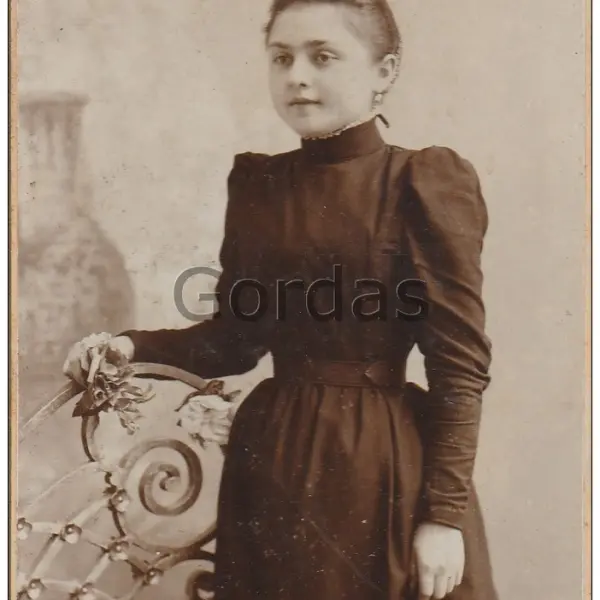An inspection of female prisoners before boarding a ship to Sakhalin Island
The way to hard labor in Sakhalin
Boris Yellinsky, a former student at the St. Petersburg Military Medical Academy, who received 20 years of hard labor for his revolutionary activities, was sent to Sakhalin in 1894. Later, in his book Sakhalin — the Black Pearl of the Far East, Yellinsky described the prisoners sea route to Sakhalin hard labor:
“Downstairs, the hold is surrounded on all sides by a grille of thick tubes with thousands of holes. In the event of a riot, steam is released into these pipes under strong pressure and all the occupants of the hold can be welded in a few minutes.
Inside the vast hold cage, bunks are arranged in three tiers. They accommodate 200 people. In total, the ship takes 800 people at a time.
You can imagine what happens there during a storm, especially at night.
Sleepy people fall off the bunk to the floor. The upper ones vomit on the lower ones. They swear in the most selective way, but they also vomit.
I remember that we (the Yaroslavl steamship) entered the Red Sea. Here we were split up and shaved again, but not half a head, but our whole head.
It became much easier without chains, but it was still unbearably difficult to sit in the hold. People took their clothes naked. Sweat was pouring from all the streams, like in a bathhouse. My chest was squeezed and my eyes were muddy. It seemed that my head was about to burst in pain.
For many, their whole bodies were covered with abscesses, from which pus oozed. This is a so-called tropical rash.
There have been deaths from heat stroke.
As soon as someone fainted, they shouted to the sentry; he blew the whistle; two paramedics showed up and took the poor man to deck.
Most of them havent come back from there. Then I found out that almost all of them died and they were lowered into the sea sewn into a canvas with a heavy grate in their legs.
This torture continued for twenty days in a row, interspersed with violent storms. However, the journey takes 45 days.”
The photo shows an inspection of female prisoners before boarding a ship to Sakhalin Island, Odessa, presumably the 1880s.
Previously, we published an article Colored First World War.
Boris Yellinsky, a former student at the St. Petersburg Military Medical Academy, who received 20 years of hard labor for his revolutionary activities, was sent to Sakhalin in 1894. Later, in his book Sakhalin — the Black Pearl of the Far East, Yellinsky described the prisoners sea route to Sakhalin hard labor:
“Downstairs, the hold is surrounded on all sides by a grille of thick tubes with thousands of holes. In the event of a riot, steam is released into these pipes under strong pressure and all the occupants of the hold can be welded in a few minutes.
Inside the vast hold cage, bunks are arranged in three tiers. They accommodate 200 people. In total, the ship takes 800 people at a time.
You can imagine what happens there during a storm, especially at night.
Sleepy people fall off the bunk to the floor. The upper ones vomit on the lower ones. They swear in the most selective way, but they also vomit.
I remember that we (the Yaroslavl steamship) entered the Red Sea. Here we were split up and shaved again, but not half a head, but our whole head.
It became much easier without chains, but it was still unbearably difficult to sit in the hold. People took their clothes naked. Sweat was pouring from all the streams, like in a bathhouse. My chest was squeezed and my eyes were muddy. It seemed that my head was about to burst in pain.
For many, their whole bodies were covered with abscesses, from which pus oozed. This is a so-called tropical rash.
There have been deaths from heat stroke.
As soon as someone fainted, they shouted to the sentry; he blew the whistle; two paramedics showed up and took the poor man to deck.
Most of them havent come back from there. Then I found out that almost all of them died and they were lowered into the sea sewn into a canvas with a heavy grate in their legs.
This torture continued for twenty days in a row, interspersed with violent storms. However, the journey takes 45 days.”
The photo shows an inspection of female prisoners before boarding a ship to Sakhalin Island, Odessa, presumably the 1880s.
Previously, we published an article Colored First World War.
Adulto
Arquitectura
Chico
Novia
Edificio
Cafetería
Silla
Niño
Multitud
Rostro
Femenino
Muebles
Cabeza
Hospital
Dentro
Masculino
Hombre
Gente
Persona
Restaurante
Mesa
Boda
Mujer
Envíado por OldPik el 6 de enero de 2025
Image

Debes iniciar sesión para comentar las fotos.
Iniciar sesión
Iniciar sesión
Fotos cercanas
Trotsky's first wife Aleksandra Sokolovskaya with her brother (sitting on the left) and Trotsky (sitting on the right)














Sin comentarios aún, sé el primero en comentar...